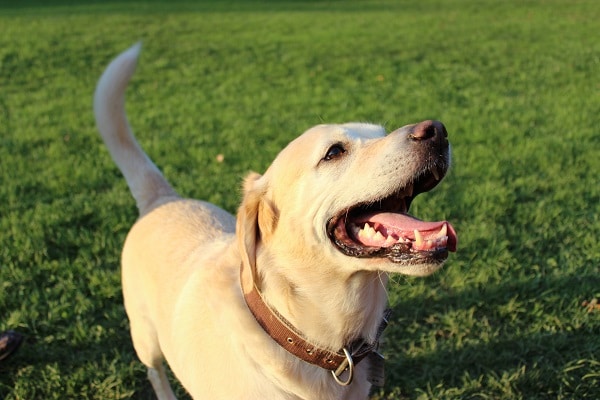Dogs are some of the most beloved creatures on the planet. They are loyal, friendly, and always happy to see you. But there are some things about these animals that might surprise you! This article will discuss six strange facts about dogs. And while some dogs might not fit into these categories, it doesn’t make it any less accurate that dogs indeed are amazing creatures. And who knows, you might just see your furry friend in a new light after reading this!
Dog’s History As Man’s Best Friends

Before getting into some of the strange facts, it’s important first to understand a little bit about the history of dogs. It is believed that dogs were the first animal to be domesticated by humans, and they have been with people ever since. Over the centuries, dogs have been bred for various purposes, from hunting and guarding to herding and companionship. Today, there are hundreds of different breeds of dogs, each with its unique appearance and temperament.
While some people choose a dog based on its looks, others select a breed known for its obedience or loyalty. Ultimately, the best way to find the perfect dog is to get to know various breeds before deciding. In the end, the bond between humans and canines is one of the strongest, and there is no doubt that dogs truly are man’s best friend.
Strange But True Things You Didn’t Know About Dogs
With the history out of the way, let’s get into some of the stranger things about dogs that you probably didn’t know. Hopefully, by the end of this article, you’ll have a newfound appreciation for these incredible animals!
Dogs Sweat Through Their Tongue

As strange as it may sound, dogs sweat through their tongue in a process known as panting. This is different from how humans sweat, which mostly happens through the pores in the skin. When a dog pants, they take in air and then exhale it rapidly. This helps to evaporate the moisture on their tongue and cool down their body temperature.
Panting is an efficient way for dogs to regulate their temperature, which they do naturally when they get too hot. However, if a dog pants excessively, it could signify heat stroke or other health problems. So if you see your dog panting more than usual, it’s important to take them to the vet for a check-up.
Dogs Have Wet Noses To Absorb Scents

Dogs have an amazing sense of smell, made possible by their wet noses. They secrete a thin layer of mucus on their nose, and this helps to absorb scent particles from the air. The mucus is then transferred to the dog’s olfactory receptors, which are located in the dog’s upper palate. From there, the scent particles are sent to the brain, where they are analyzed and interpreted.
This process happens quickly, allowing dogs to take in a huge amount of information about their environment through their sense of smell. In addition to helping dogs identify different scents, their noses’ wetness also helps keep them cool in hot weather. Consequently, dogs’ wet noses are important in smelling and regulating temperature.
Dogs Have Three Eyelids

Another interesting fact, dogs have three eyelids: an upper lid, a lower lid, and a third eyelid, or nictitating membrane. The nictitating membrane is a white or pinkish triangle-shaped piece of skin that sweeps across the eye from the inside corner. This third eyelid is also called the haw, and it serves several important functions. For one, it helps to keep the eye moisturized and protected from debris. It also provides additional support for the eyeball and helps to reduce friction when the eye blinks.
In addition, the haw helps dogs to see better in dim light by reflecting light into the eye. Finally, this third eyelid can help to protect the eye from damage if the dog is involved in an accident or fight. While most people are only familiar with two eyelids, dogs have three – each of which serves an important purpose.
Dogs Use 18 Muscles To Move Their Ears

Dogs are well known for their expressive ears, which they use to communicate various emotions, from happiness to fear. What is less well known is the anatomy that makes this communication possible. Dogs have 18 muscles in each ear, which gives them an incredible range of movement. By tilting, turning, and raising their ears, dogs can signal their mood and intentions to other dogs and humans alike.
The muscles that control a dog’s ears are very delicate and require a lot of coordination to work properly. As a result, dogs spend a lot of time perfecting their ear movements, ensuring they are sending the right message to their companions. So the next time you see a dog tilting its head, take a moment to appreciate the advanced anatomy that is at work.
Some Dogs Have A Dominant Paw

As you probably know, most people are right-handed, meaning they favor their right hand for activities such as writing or throwing a ball. But did you know that some dogs also have a dominant paw? A recent study found that about 60% of dogs prefer their right paw, while the remaining 40% either showed no preference or favored their left paw. Interestingly, this handedness is not related to the dog’s size, breed, or level of training. So why do some dogs tend to favor one paw over the other?
One theory is that it has to do with the dog’s brain. Like humans, a dog’s brain is divided into two hemispheres, each hemisphere controlling certain functions. For example, the left hemisphere is responsible for movement and spatial awareness, while the right hemisphere controls functions such as smell and hearing.
A Dog’s Whiskers Helps Them To See In The Dark

A dog’s whiskers are not just there for show – they serve an important purpose. Whiskers are highly sensitive and help a dog gauge distance and navigate in the dark. When a dog is exploring new territory, the whiskers act like antennas, sending information back to the brain about what is nearby. If something brushes against the whiskers, the dog will be able to tell how far away it is and whether it is safe to proceed.
Additionally, whiskers can also help a dog to catch prey. For example, when an animal is trying to escape, its movement will cause a disturbance in the air. This disturbance will cause the whiskers to vibrate, alerting the dog to the prey’s whereabouts. So next time you see your dog’s whiskers twitch, know that it is not just reacting to a gust of wind – it is using its senses to navigate the world around it.
Are You Amazed By The Things You Didn’t Know About Dogs?
Dogs are amazing creatures, and there is still much to learn about them. The next time you are around a dog, take a moment to appreciate all of the incredible things that it can do. From using its whiskers to see in the dark to moving its ears to communicate with other dogs and humans, a dog is truly unique. And while it may seem like people know everything there is to know about these furry friends, the truth is that there are still many mysteries surrounding these beloved creatures. Who knows what humans will learn about dogs next?